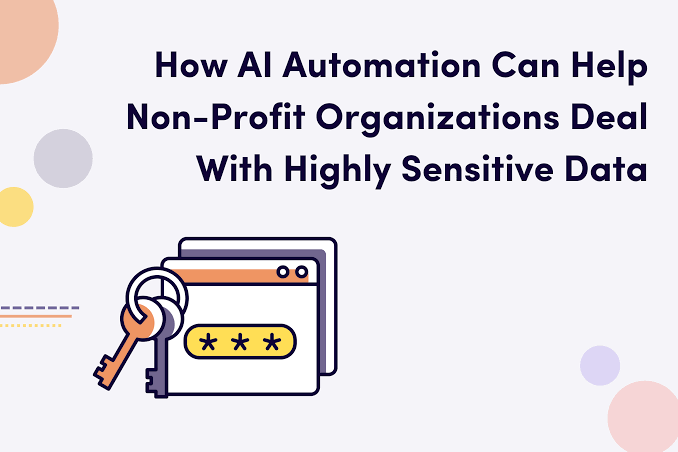Explore how AI automation can transform non-profit organizations by enhancing operational efficiency, improving data analysis, and boosting fundraising efforts. Understand the challenges of high initial investment, integration complexity, data privacy, and potential biases to make informed decisions about leveraging AI for greater impact and effectiveness.
The Advantages and Difficulties of Implementing AI Automation in Charitable Organizations
Artificial Intelligence AI is playing a role, in industries including the realm of non profits. With the pressure to enhance efficiency and impact AI automation presents opportunities. Yet the incorporation of AI into non profit groups brings about a mix of challenges that require thoughtful examination.
Understanding AI Automation
AI automation involves utilizing intelligence technologies to carry out tasks that typically necessitate human involvement. This spans from data input to intricate decision making procedures. Non profit organizations, with their constraints on resources and personnel can leverage AI automation to optimize processes, expand outreach and boost overall efficiency.
Advantages of AI Automation for Non Profit Groups.
1. Enhanced Operational Efficiency
One of the key advantages of AI automation for organizations is the enhancement of efficiency. Tasks like entering data, managing donors and scheduling can be automated, freeing up time and reducing the workload on staff. This enables employees to concentrate on activities that can advance the organizations mission more effectively.
For example AI powered systems can streamline donor outreach and engagement by handling email campaigns and monitoring donor interactions. This ensures that non profits maintain communication with supporters tailor their interactions and ultimately improve donor retention rates.
Additionally AI automation offers improved data analysis and decision making capabilities. Non profits often gather data about their operations, donors and beneficiaries. Manually analyzing this information can be time consuming and susceptible to errors. AI automation can swiftly and accurately process and examine datasets providing insights that guide decision making.
For instance AI technology can recognize patterns and trends in how donors behave which assists organizations in customizing their fundraising approaches. Additionally predictive analytics can anticipate upcoming patterns allowing non profits to proactively meet needs and seize opportunities.
Boosted Fundraising and Outreach Efforts
AI tools have the potential to enhance fundraising initiatives by refining campaign tactics and precisely targeting potential donors. Machine learning algorithms can examine history to predict donor prospects. This enables non profits to use their resources effectively.
Furthermore AI can assist non profits in creating tailored messages that resonate with different audience segments. By analyzing data from media and other sources AI can pinpoint influencers and advocates helping organizations expand their outreach and foster community connections.
4. Cost Savings
AI automation has the potential to offer savings, for non profit groups. By streamlining tasks organizations can cut back on the need for extra administrative personnel. This is particularly advantageous for smaller non profits with tight budgets.
Moreover tools powered by AI can assist in optimizing resource distribution and pinpointing areas where costs can be minimized without sacrificing service quality. This enables non profits to channel a larger portion of their funds directly into their mission and programs.
However there are challenges associated with implementing AI automation in non profit organizations.
1. High Initial Investment
While there are advantages to AI automation the initial financial commitment can be quite significant. Smaller non profit groups may find it difficult to cover the expenses related to acquiring and implementing AI technologies. This includes costs, for software, hardware and training.
Moreover keeping AI systems updated may incur ongoing expenses that pose challenges for non profit organizations with budgets. Obtaining funding for these investments can be a hurdle that organizations must navigate.
2. Complexity and Integration Issues
Incorporating AI automation into established systems and processes can be a task for non profit organizations. They might struggle to integrate the AI tools seamlessly into their current setup, potentially causing disruptions and inefficiencies.
Additionally AI systems often demand expertise and skills for operation. Non profits may have to invest in training their existing staff or bringing in new team members with the required knowledge. This can be especially tough for organizations already dealing with limitations.
3. Data Privacy and Security Concerns
The utilization of AI automation involves managing amounts of sensitive information such, as donor details and beneficiary data. This brings up concerns regarding privacy and data security. Non profit organizations must ensure that their AI systems adhere to laws and standards to safeguard the information they handle.
Data breaches or mishandling of information can erode trust and harm the organizations reputation. Non profits should establish security protocols and conduct audits of their systems regularly to protect against threats.
4. Possibility of Biases and Ethical Considerations
AI systems are not exempt from biases that may stem from the data they are trained on or the algorithms employed. Data or biased information can result in outcomes and unintended effects. For non profits this can influence their capacity to effectively and equitably serve diverse communities.
When it comes to implementing AI automation ethical factors are important. Non profit organizations need to be aware of how AI is utilized and make sure its use aligns with their values and objectives. Being transparent and accountable in how AI makes decisions is crucial, for upholding the organizations integrity.
Conclusion
The use of AI automation in non profit organizations holds promise in terms of operational efficiency, data analysis and cost savings. Nevertheless the adoption of AI comes with hurdles, like expenses, complexity, privacy issues and potential biases. Non profits must consider these aspects and create a plan for integrating AI technologies that aligns with their mission and objectives. By overcoming these obstacles and utilizing the benefits non profits can leverage AI to make a impact and accomplish their goals more efficiently.
